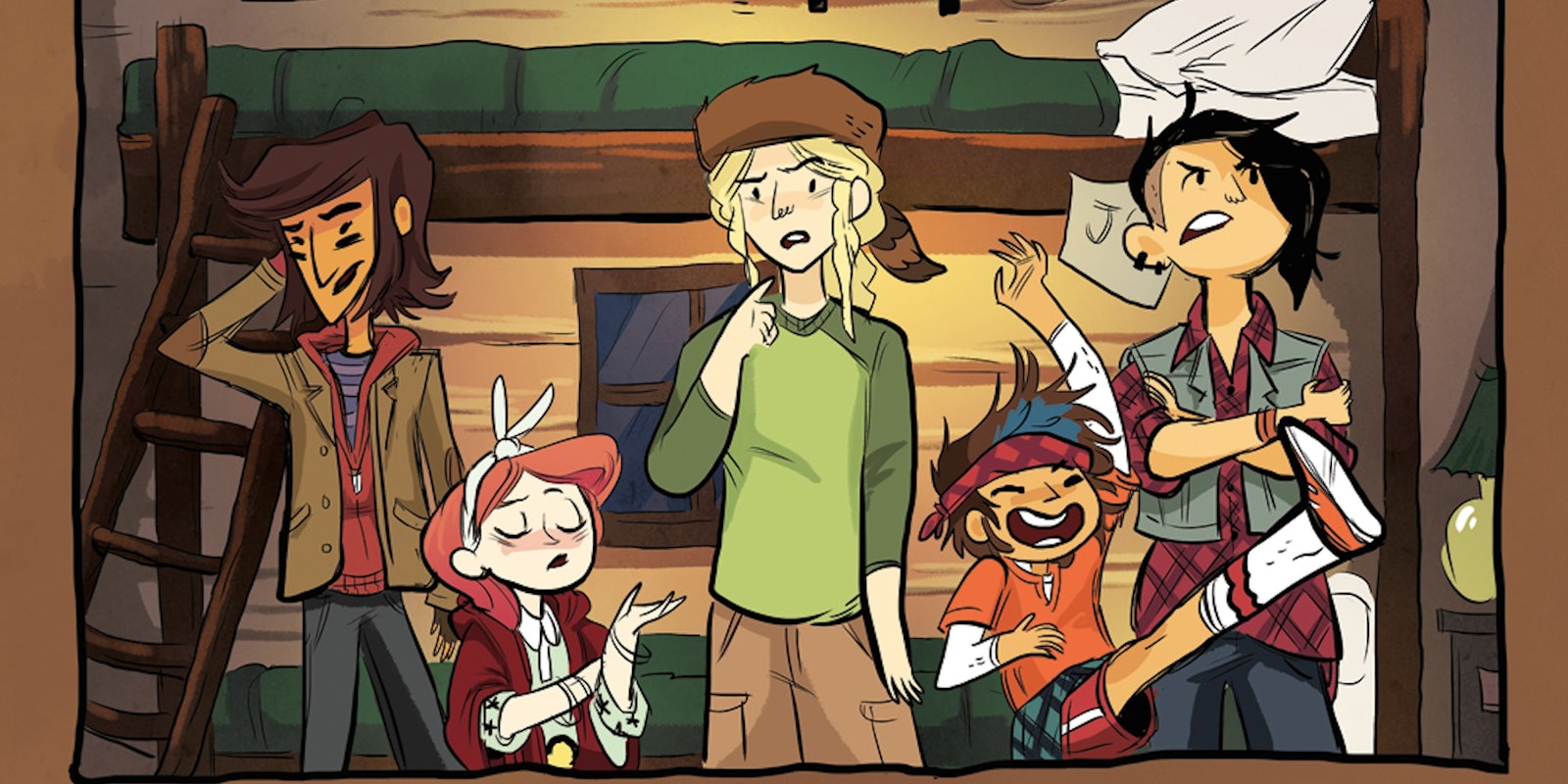A list of lauded queer comic artists joined a late Friday panel at Comic-Con to discuss the issue of queer representation in media aimed at younger viewers.
Moderated by Eisner-winning Lumberjanes creator Shannon Watters, the packed panel featured Noelle Stevenson (Nimona), James Tynion IV (The Woods, Batman & Robin Eternal), Kat Leyh (Lumberjanes), and Dan Parent (Archie Comics).
The focal point of the discussion was one that has increasingly become a major topic of conversation across geek culture: How do you increase representation of marginalized identities in mainstream media without perpetuating the many, many stereotypes that exist in storytelling?
The panel collectively discussed the challenges of writing representative characters within a comics industry that’s rapidly playing catch-up, and also bringing those characters to audiences who desperately need to see them.
“It’s been an experiment in finding out what those limits are, and what you end up finding is, they’re not as scary as you think they are,” said Stevenson of the experience of collaborating on Lumberjanes, as well as writing her queer webseries-turned-comic, Nimona.
Parent, who writes the Archie universe’s first queer character, Kevin Keller, spoke of the process of diversifying Riverdale, the world of the Archie universe. “Young readers are very open-minded,” he said. “They like when we add diverse characters. The only backlash has been from old people.” He also spoke of experiencing brief resistance from editors to the idea of actually displaying Keller’s relationship with his boyfriend.
“Archie and Betty and Veronica kiss all the time,” he said. “Why can’t Kevin kiss his one boyfriend?”
“It’s identification,” said Tynion. “It’s being able to see that you are a part of the world. It’s something that all of us who are queer had an issue with growing up.” He spoke of having to find coded subtext even in overtly homophobic scenes between characters, “because that was the only recognition that I was a part of this fictional world that I was reading.”
The other thing the panel spoke of was cultural normalization, and the damaging impact that heteronormative fiction can have on young queer and genderqueer people. “When a group is othered,” said Tynion, “there’s a core fear there.” Preteens and teens who fear being queer and genderqueer need empowered representations of themselves in order to feel better about who they are.
“I think in a perfect world, [representation] teaches them how to have healthy relationships,” said Stevenson.
“It’s just holding hands, but it’s still a step, and it still means a lot,” said Tynion, speaking of the subtly canon queer relationship that ended popular Nickelodeon show Legend of Korra.
“I think everyone’s a little bit queer,” he added later. “I think we all exist on a spectrum of gender and sexuality and everyone plots differently on that chart. I think we’re reaching a point in culture where individuality is being celebrated… and a lot of that comes from the Internet. It allows people to form themselves as a singular [identity].”
Tynion also pointed out that as problematic as tokenism—the act of putting a “token” character representing an identity in a predominantly white cisgendered heteronormative narrative—can be, it’s also the first step towards real representation.
“I wish there were a few more token trans characters across all media right now, because that’s the first step.”
Tynion praised Cartoon Network’s Steven Universe as a show that has been breaking the mold regarding its portrayal of diverse characters presented in a children’s media setting. “I can’t wait for that to be the norm,” he said.
“From Korra to now [with Steven Universe], that’s just unheard of,” said Stevenson, commenting on the rapid increase of queer representation in children’s media.
“I really want to see normalization of queer sexuality—as well as the lack of sexuality,” she continued, pointing out that the constant association of queer identity with sexualization can be weird and discomforting, especially for queer kids. The panelists also discussed the importance of representing asexuality and supporting asexual viewers and readers.
So how can writers add diversity into the mix without screwing it up?
Leyh recommended seeking out people with different life experiences. She noted that Tumblr blogs are an excellent source to gain an understanding of people who are genderqueer, transgender, asexual, or other.
“If you only want people like you who are in that bubble, then frankly you live in a less interesting world,” said Tynion. When you diversify your characters and the people writing about them, “You’re opening up so much more story potential.”
Stevenson quoted a Tumblr post by cosetties, which argues, “Write marginalized characters but don’t write about marginalization unless you experience it.”
But Tynion disagreed, noting that such an attitude could engender an echo chamber. “There are ways to tell those stories without being exploitive,” he said, noting that whenever the discussion becomes prohibitive you risk losing valuable stories.
“I’d rather [good-intentioned] people write something dumb and shitty that we can point and laugh at than that people not even try.”
Although the panelists agreed the subject was complicated, Leyh summed up the importance of taking the question seriously when it comes to representing queer identities for media aimed at all ages:
“Because gay people are children, too.”
Photo via Comixology
